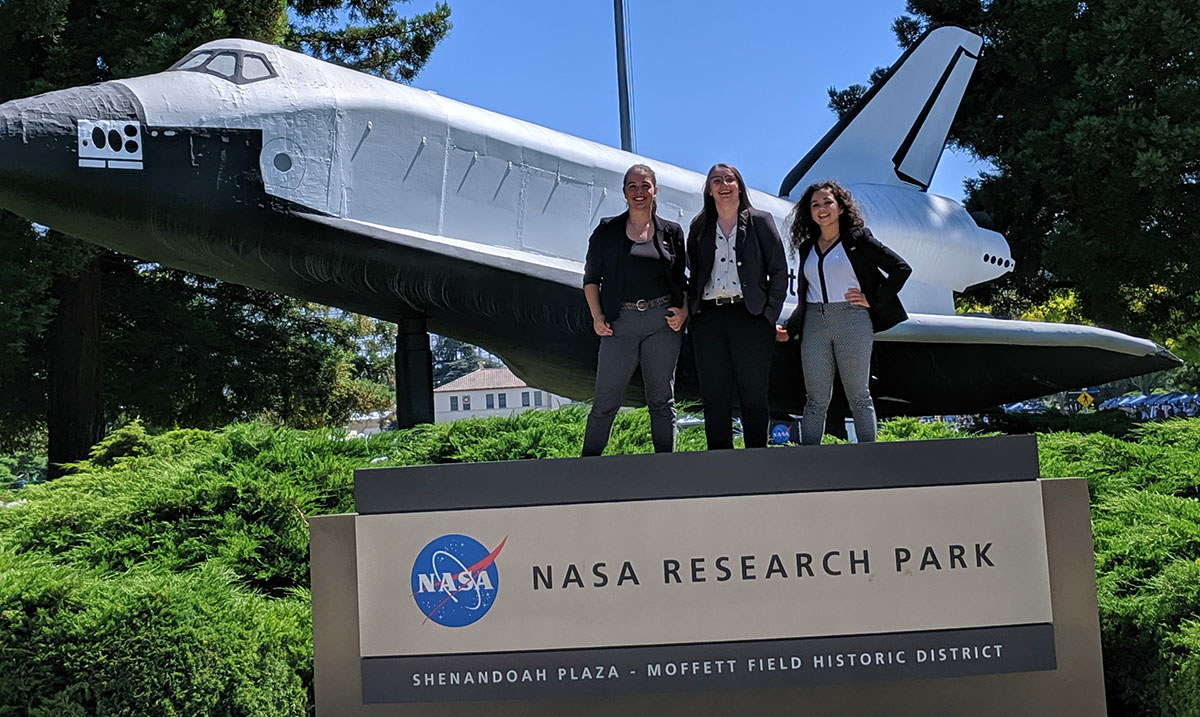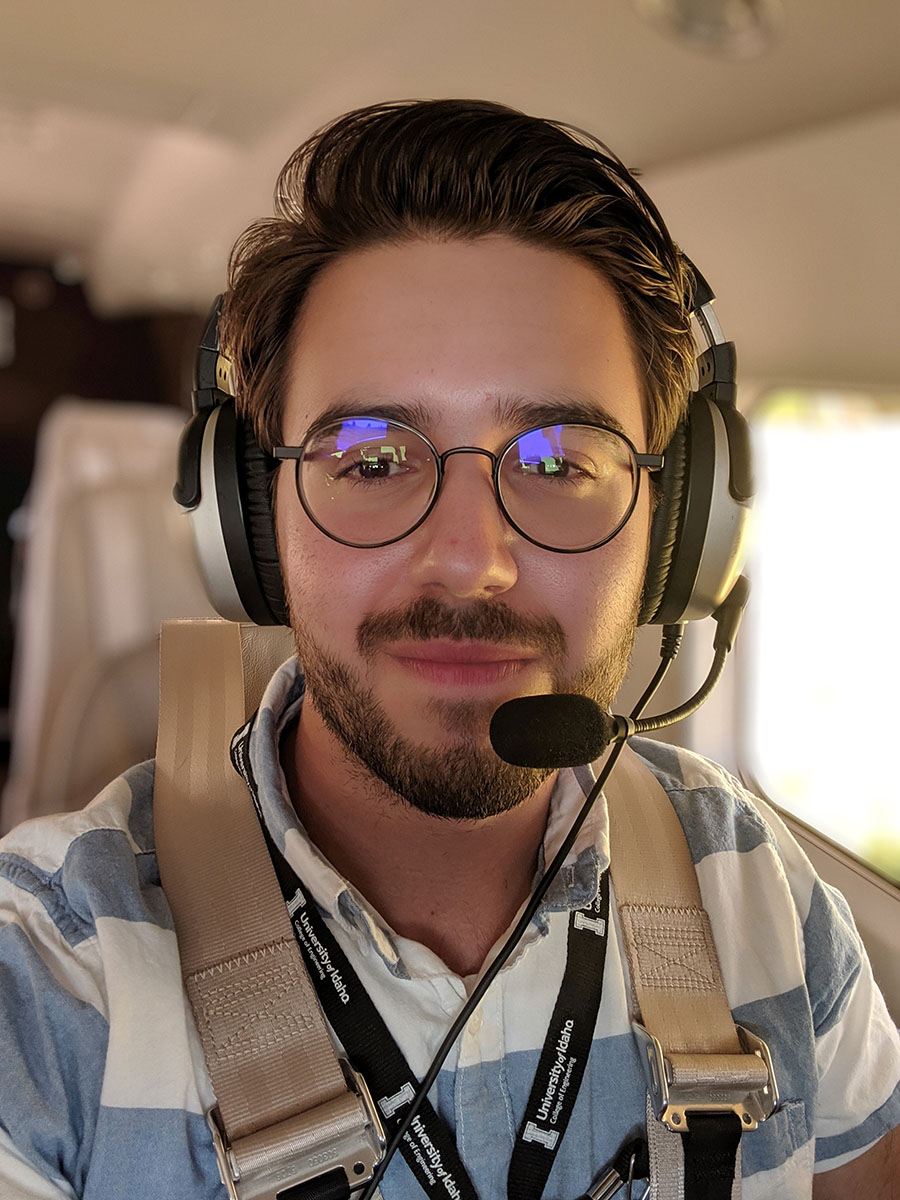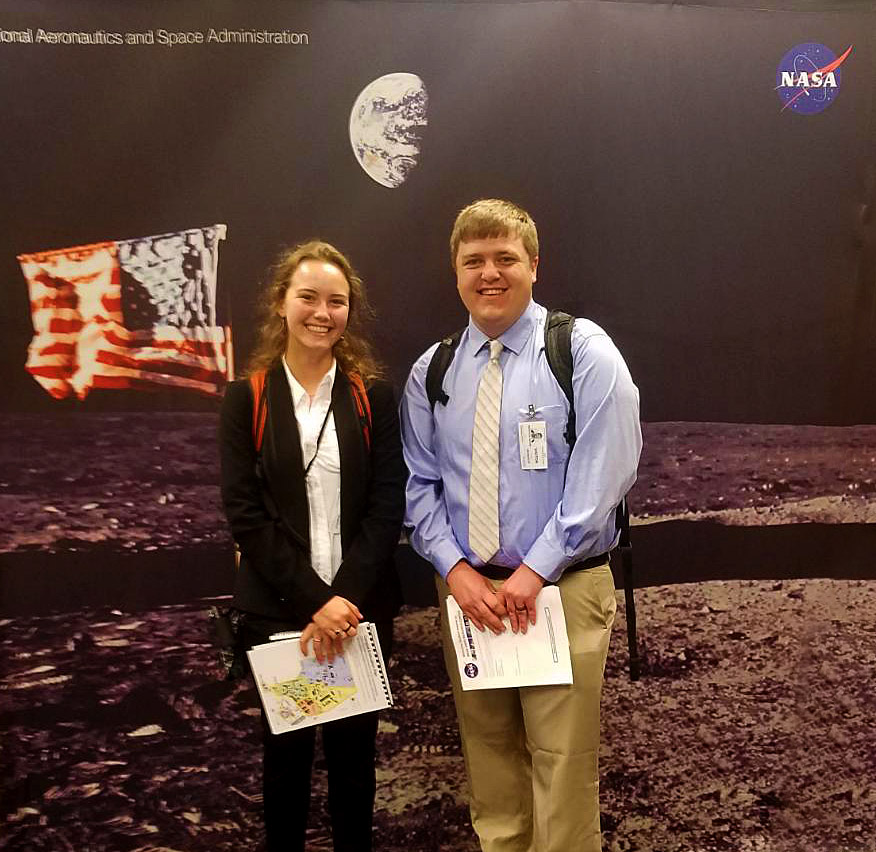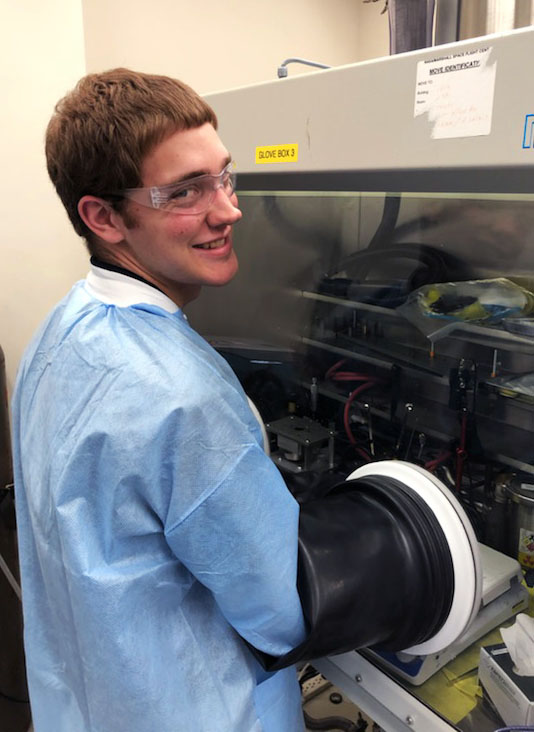Summer with NASA
Engineering students work with NASA and Idaho Space Grant Consortium industry partners
University of Idaho College of Engineering Students are interning with NASA across the country and here in Idaho.
Students work through the Idaho Space Grant Consortium (ISGC) on the Moscow campus. ISGC connects students to mentor-directed, career-related internship programs that contribute to NASA’s mission of space exploration and discovery.
Read about some of our current NASA and ISGC industry partner interns.
- All-female team makes updates to NASA’s rotary aircraft models for future prototyping
- Ricky Baptista gets back into aeronautics at Quest Aircraft Company
- Chemical engineering majors study material properties of heat shield coating on NASA capsules
- James Zillinger studies nuclear rocket fuel on NASA thermal propulsion team
Learn More About NASA Internships
NASA accepts summer internship applications between November and March each year. They are a fun, challenging way to build professional experience for students studying engineering, mathematics, computer science, the physical/life sciences, and much more.
For more information, email ISGC@uidaho.edu or visit the ISGC internship website.
Jadzia Graves, MacKenzie Sexton and Makynzie Zimmer
Location: NASA Ames Research Center in Mountain View, California
Majors: Mechanical Engineering

Mechanical engineering majors Jadzia Graves, MacKenzie Sexton and Makynzie Zimmer are working in the Aeromechanics Office at the NASA Ames Research Center this summer.
“I definitely didn’t think I was going to be working for NASA, coming from Idaho. Not only do I have this amazing opportunity, I also know other interns here. ” Jadzia Graves
Mechanical engineering major from Kuna, Idaho
Together, they have been updating computer-aided design models for about 15 rotary-wing aircraft, some of which will be 3D printed for future prototyping and research. The process also helps NASA identify manufacturing issues that may arise before the rotorcraft hit the commercial sector.
They’ve even updated models for NASA’s six-passenger drone that’s being considered for use with Uber Elevate, the transportation company’s aerial ridesharing arm planned for 2023.
“We’re trying to make it as easy as possible for models to be transformed into code to analyze the performance of the aircraft,” said Zimmer, a 2019 graduate from Boise, Idaho. “It helped a lot we had the three of us working on same thing. We were able to help each other and ask for help.”
Zimmer had previously interned at Ames, but Graves and Sexton were both surprised when an email from NASA landed in their inbox.
The three are part of a 60-intern group, 6 of which are from the University of Idaho.
“The first few weeks, I thought, ‘This is fake,’ said Sexton, who hails from Burlington, Washington. “For anyone thinking about a NASA internship, don’t worry about the interpersonal aspect. Everyone really cares for each other, there’s a lot of comradery and it’s not intimidating.”
Mechanical engineering major Ricky Baptista is spending his summer with Quest Aircraft Company. Based in Sandpoint, Idaho, the NASA Idaho Space Grant Consortium industry partner specializes in the design and manufacturing of short takeoff and landing aircraft used for humanitarian missions across the world.
“You get so much practical experience from an internship. Going through school, you kind of feel like there’s a huge aspect that can’t be taught in class. There is this aspect of being able to work with other people and being able to work independently. It’s kind of like learning how to be a person. ” Ricky Baptista
Mechanical Engineering major from Buhl, Idaho
As a teenager, Ricky spent a lot of time at the small airport near his hometown of Buhl, Idaho, just to watch planes take off and land and occasionally talk to pilots. Later, during a mock interview session in high school, Ricky ran into one of the pilots he’d met, and eventually landed an apprenticeship working under the direct supervision of a licensed aircraft mechanic.
“I started off small, like cleaning the belly of airplanes and slowly moving my way up. I gained a lot of practical experience, doing things such as changing brake pads, assisting with annual inspections, and cleaning spark plugs.”
“When it was time to go to college, I wanted a place far away from home but not too far. U of I is pretty well known for its engineering program. From talking to people locally, I found that if you’re going to school for engineering, and want to stay in Idaho, you go to U of I.”
Ricky is getting back into aeronautics from a space-focused stint during his first three years at U of I. He and an interdisciplinary team of undergraduates were awarded an Undergraduate Student Instrument Project grant from NASA's Office of Education in 2016. The team’s project used high-altitude balloons to launch three different payloads to the edge of the Earth’s atmosphere.

Mason Anderson and Alathea Davies
Location: NASA Ames Research Center in Mountain View, California
Majors: Chemical Engineering
Chemical engineering majors Alathea Davies and Mason Anderson are interns at the NASA Ames Research Center in California this summer, working to identify material properties of a resin used to coat the heat shields on NASA capsules, spacecraft that reenter Earth’s atmosphere without wings.
“Internships like this are the best networking in the world.” Mason Anderson
Chemical Engineering major
“About a year ago, I decided I wanted to go into aerospace, so the most obvious option was to get an internship at NASA. Getting here and meeting people, now I’m seeing the real application of things that I learned in class. It’s helping me get focused and to funnel my future plans and expectations,” said Davies.
This is Mason’s second visit to NASA Ames. Last summer he also had a preliminary visit to help work on thermal protection systems and other instruments.

James Zillinger
Location: NASA’s Marshall Space Flight Center in Huntsville, Alabama
Majors: Materials Science and Engineering
Materials science and engineering major James Zillinger is working alongside NASA’s nuclear thermal propulsion team at NASA's Marshall Space Flight Center this summer.
“Using a chemical rocket to get to Mars, you’d have a nine-month estimated time of arrival and no fuel left to get back. Going nuclear, you have a closer to a two-month arrival time with fuel to get home. ” James Zillinger
Materials Science and Engineering major from Troy, Idaho
His work is a continuation of nuclear rocket fuel analysis that began in the 60s and 70s. Nuclear propulsion’s moderate thrust and high fuel efficiency make it a prime candidate for getting humans into space in a short timeframe for longer missions.
James’ work involves researching the use of cermets in nuclear rocket fuel. The ceramic and metallic components of cermets make them one of the few materials able to survive the extreme heat created during nuclear propulsion.
This is James’ second summer with NASA. Findings from his summer 2018 internship were published and presented during the Nuclear and Emerging Technologies for Space annual meeting.

Disclaimer: Views and opinions expressed do not necessarily state or reflect those of the U.S. Government or NASA.
Article by Alexiss Turner, College of Engineering
Published in August 2019










